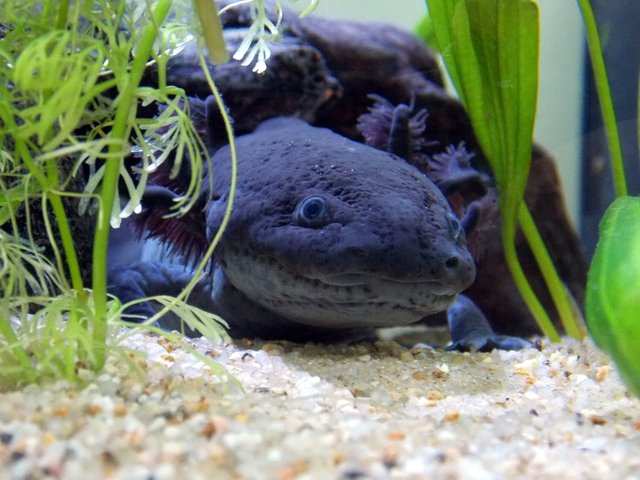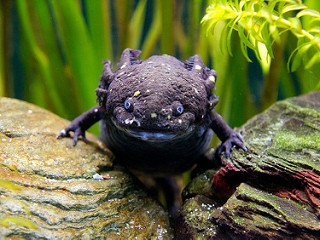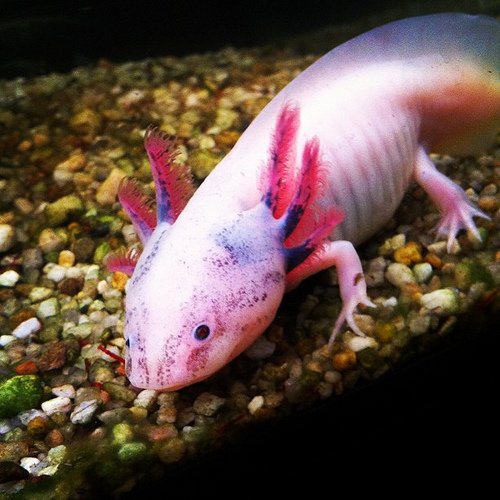Amazing Creature #4 Axolotl (Mexican salamander)
Axolotls: The Tiger Salamander and a Fascinating Mexican Axolotl
Hey steemians,
Today in the series " Amazing Creature" I have axolotl, popularly known as Mexican salamander or Mexican walking fish,but it is not a fish it’s an amphibian.

They have a characteristic property which makes them different from other amphibians is that they attain adulthood without undergoing any metamorphosis stage. Axolotl is an amazing model organism to carry out experiments and understand various mechanism related to wound healing and regeneration. But first let me give an introduction about Axolotl.

The unusual character of this amphibian is that they remain mostly in larval stage and do not show any metamorphosis. An adult axolotl ranges in size from 15-45 cm but mostly they are about 23 cm in size. They do not have any eye lids and limbs are underdeveloped. Males and females can be differentiated on the basis of their structure, males have swollen cloacae and females have wider bodies full of eggs (2). The main striking physical feature of axolotl is their external gills which seem like branching projections. They develop lungs too which they use when they swim to surface to gulp some air but mostly they live underwater. Axolotl show camouflage as they shows presence of four pigmentation genes. The colors in which axolotl found are leucistic, albino, axanthic and melanoid, most common are albino and leucistic (3). It has been also shown by researchers that they can change their color of their body by changing size of melanophores (4).
One of the most amazing characteristic of axolotls is neoteny that means they become adult without undergoing metamorphosis. This phenomenon is due to absence of thyroid gland as a result they lack thyroid stimulating hormone which plays role in transformation. In a work of Dr.Sebastino Venturi it’s shown that iodine is essential for development of organism at each and every level. And in case of axolotl there is no thyroid as a result no thyroxine and iodothyronine they lack metamorphosis (5).
Axolotl as model organism
The feature which makes them a model organism is their ability to regenerate their limbs and it can be used to study the wound healing process. In 2015, Larry Lemanski group has carried out experiment to identify the genes involved in limb regeneration on axolotl. With this experiment the group identified the genes which are involved in regeneration that is homeobox genes,retinoic acid synthesis and transport genes and epidermal growth factors (6).


Another point which makes it is model organism is its genome. The complete genome of axolotl was published in 2018 which was found to be 32 gigabase pair long (10 times in size with respect to human genome), axolotl encodes 23,251 proteins which is close to human as human genome encodes for 20,000 proteins (8).Image Source
References
Axolotl verges on wild extinction (BBC News)
Investigator on Iodine Deficiency Disorders and Iodine Metabolism
You may like to see my other posts on Amazing Creatures:

Amazing Creatures #2 Painkilling Pufferfish
Amazing Creature #3 Sea cucumber
Hope you have found this article interesting. If you do, please upvote and resteem.
Happy Reading :)
Vinamra
Being A SteemStem Member